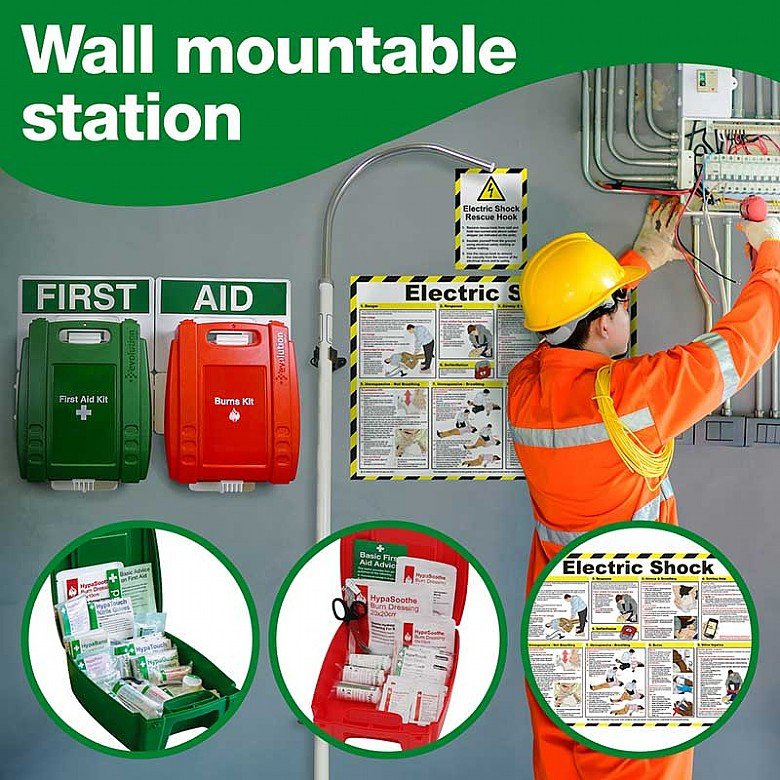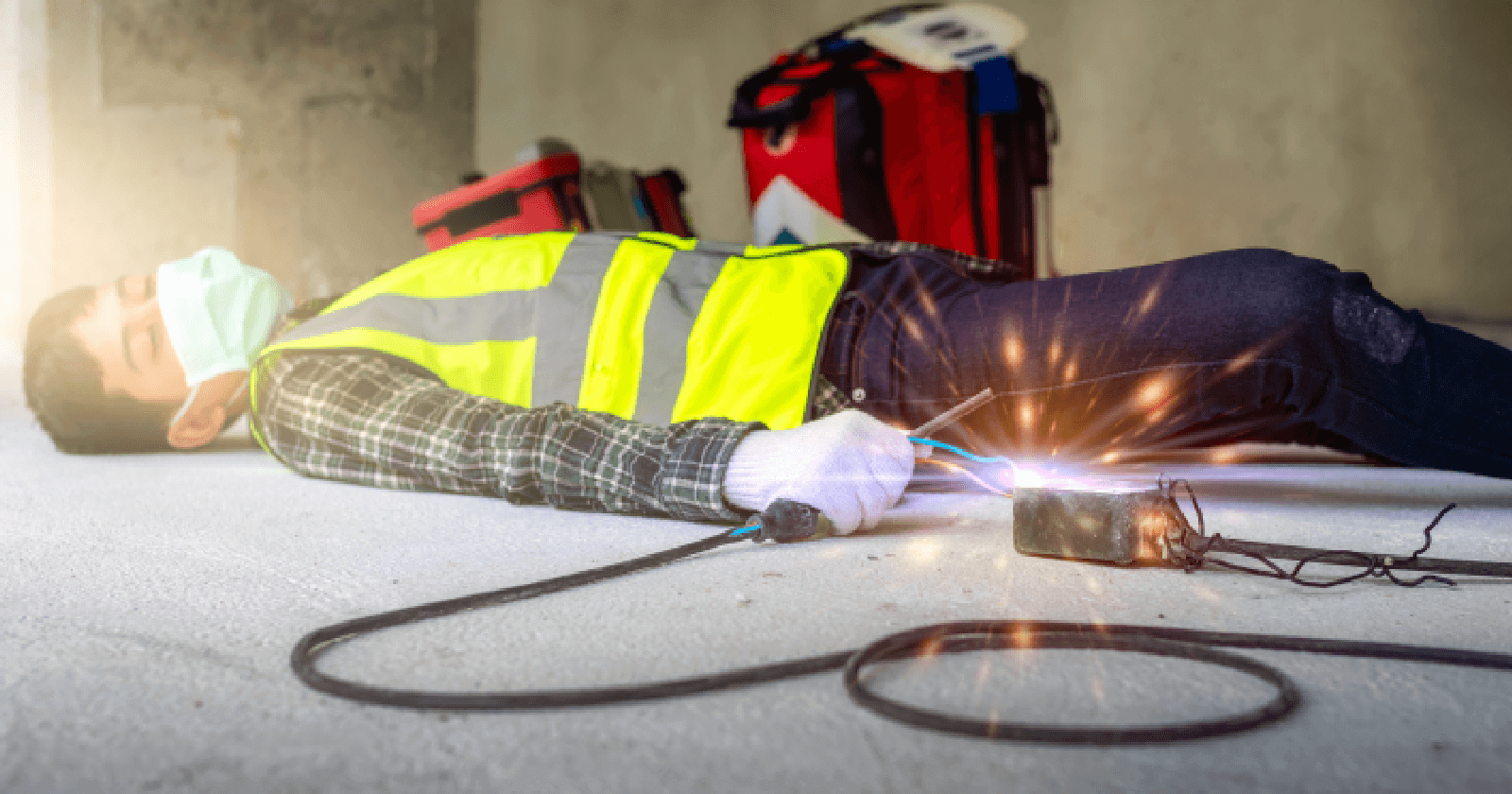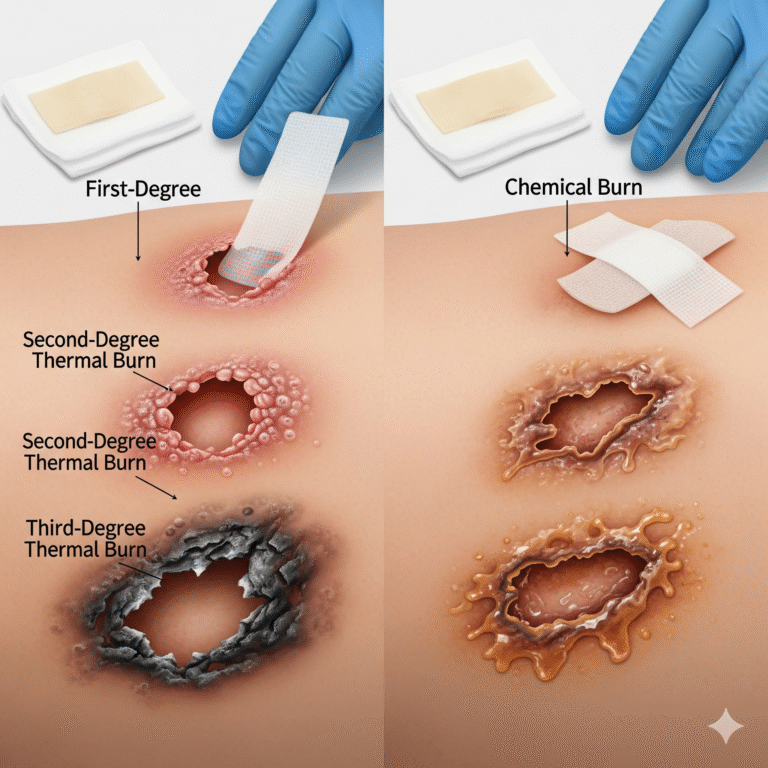First Aid Box for Electric Shock – The Complete Guide
Introduction to First Aid Box for Electric Shock
A First Aid Box for Electric Shock is an essential tool for every home, workplace, and school. Electrical shock injuries are more common than most people realize and can range from mild tingling sensations to severe burns, respiratory failure, or even cardiac arrest.
Having a first aid box specifically designed for electrical shock emergencies can mean the difference between life and death before professional medical help arrives. In this guide, we will explain:
- Why a specialized kit is necessary.
- What items to include in your box.
- How to use them properly in an emergency.
- Practical safety tips to avoid electrical injuries.
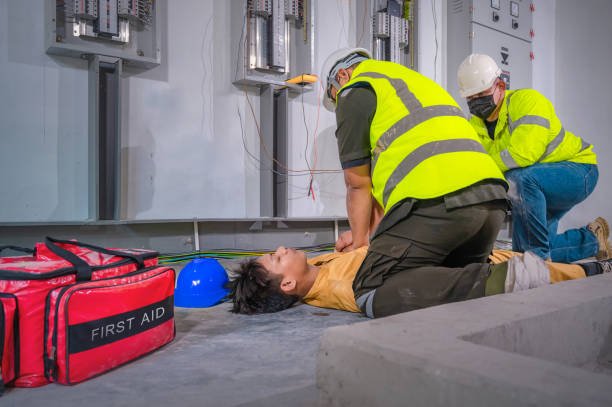
Why You Need a First Aid Box for Electric Shock
Unlike cuts or minor injuries, an electric shock can:
- Disrupt the heart’s rhythm, leading to cardiac arrest.
- Cause deep tissue burns that aren’t always visible on the skin.
- Affect breathing by damaging internal organs.
A basic first aid kit is not enough. You need tools specifically for burns, resuscitation, and cardiac emergencies, making a First Aid Box for Electric Shock vital.
Essential Items in a First Aid Box for Electric Shock
Here’s a complete checklist of what to include:
- Non-conductive gloves – To handle the victim safely.
- Burn dressings and sterile gauze – For covering electrical burns without sticking to the skin.
- Blunt-ended scissors – To cut away clothing near the wound.
- CPR mask or face shield – Protects both rescuer and victim during rescue breathing.
- Automated External Defibrillator (AED) – A lifesaving device to restart the heart.
- Instant cold packs – To reduce pain and swelling.
- Thermal blanket – To keep the victim warm and prevent shock.
- Adhesive tape & triangular bandages – For securing dressings and immobilizing limbs.
- Antiseptic wipes – For cleaning minor wounds or areas near burns.
- Pain relievers (if safe) – For temporary relief until professional care is available.
- Ensure safety first
- Turn off the power source before touching the victim.
- Use a wooden stick or other non-conductive tool if necessary.
- Check responsiveness and breathing
- If unresponsive and not breathing, start CPR immediately.
- Use the AED as soon as possible.
- Treat burns
- Run cool (not cold) water over the burn for several minutes.
- Cover with a sterile, non-adhesive dressing.
- Prevent shock
- Lay the person flat, elevate legs slightly, and cover with a blanket.
- Call emergency services immediately
- Even if the victim appears fine, internal injuries may still exist.
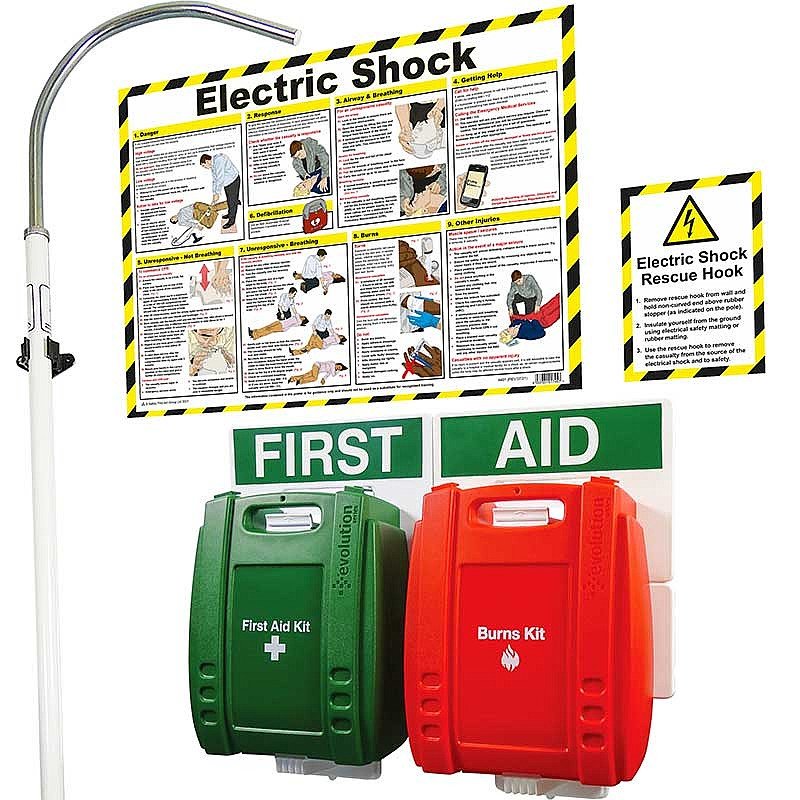
Electrical Safety Tips to Prevent Accidents
- Use only insulated tools when handling electricity.
- Never operate electrical appliances with wet hands.
- Install circuit breakers and ground fault interrupters (GFCI) at home and work.
- Teach family and co-workers how to perform CPR and use an AED.
- Keep a First Aid Box for Electric Shock accessible in high-risk areas.
Conclusion
A First Aid Box for Electric Shock is not just a medical kit – it is a life-saving resource. By equipping it with the right items such as burn dressings, a CPR mask, and an AED, you can make a critical difference in survival and recovery during electrical accidents.
👉 Remember: Safety comes first, quick action second, and professional medical help must always follow.
